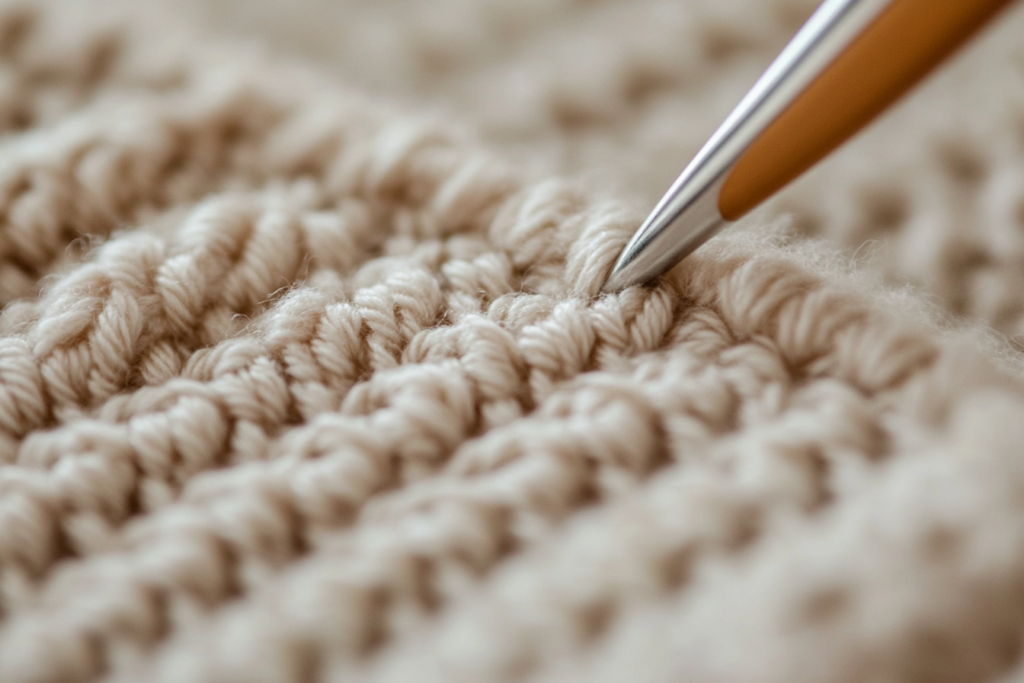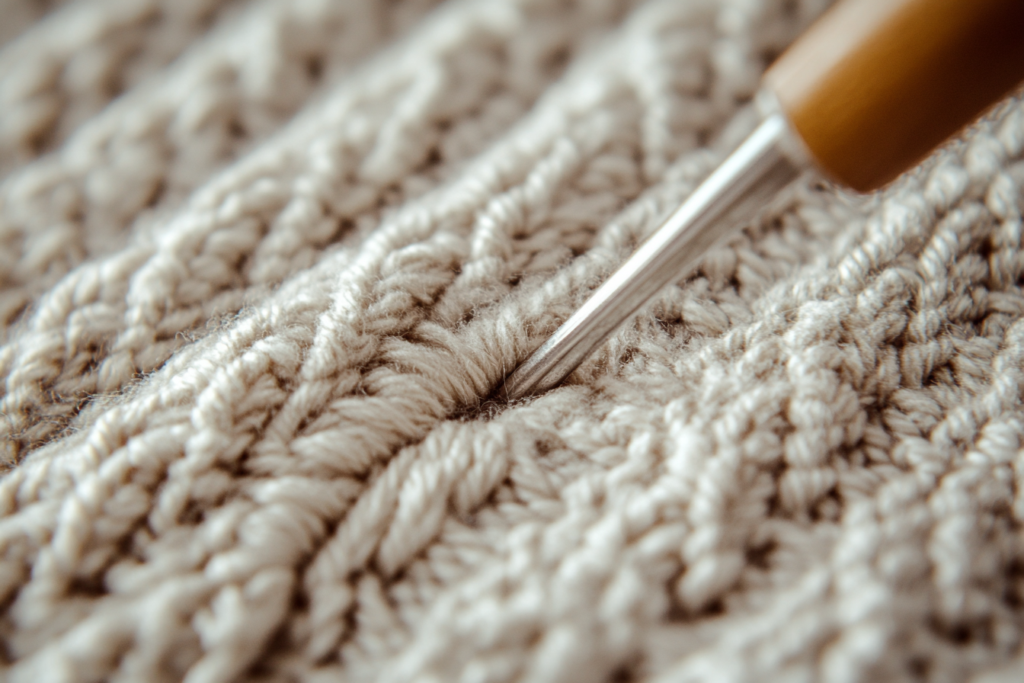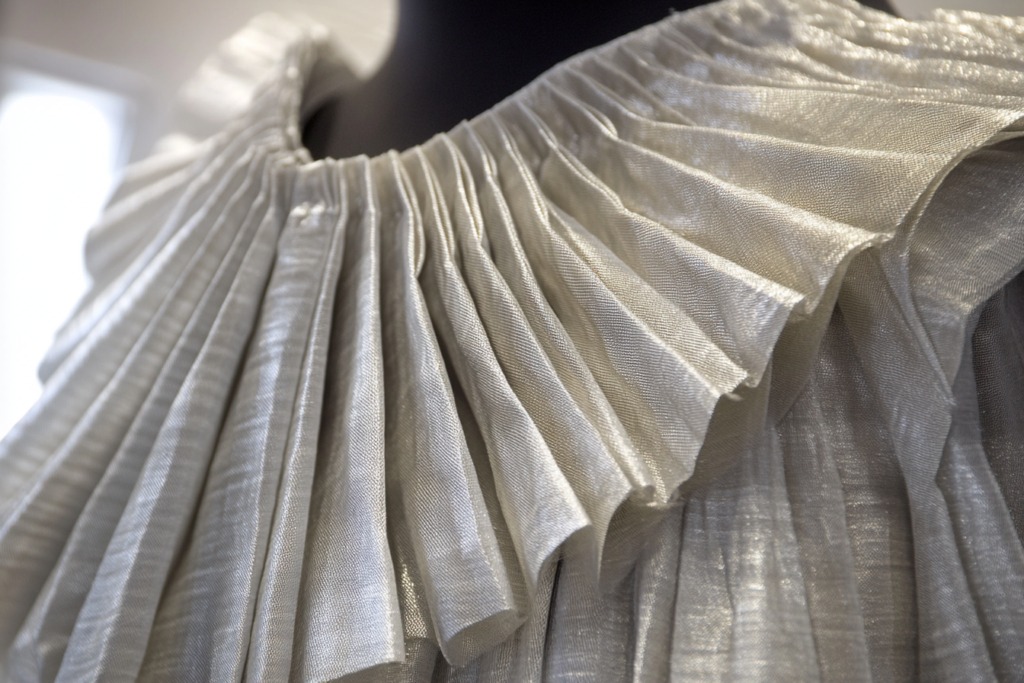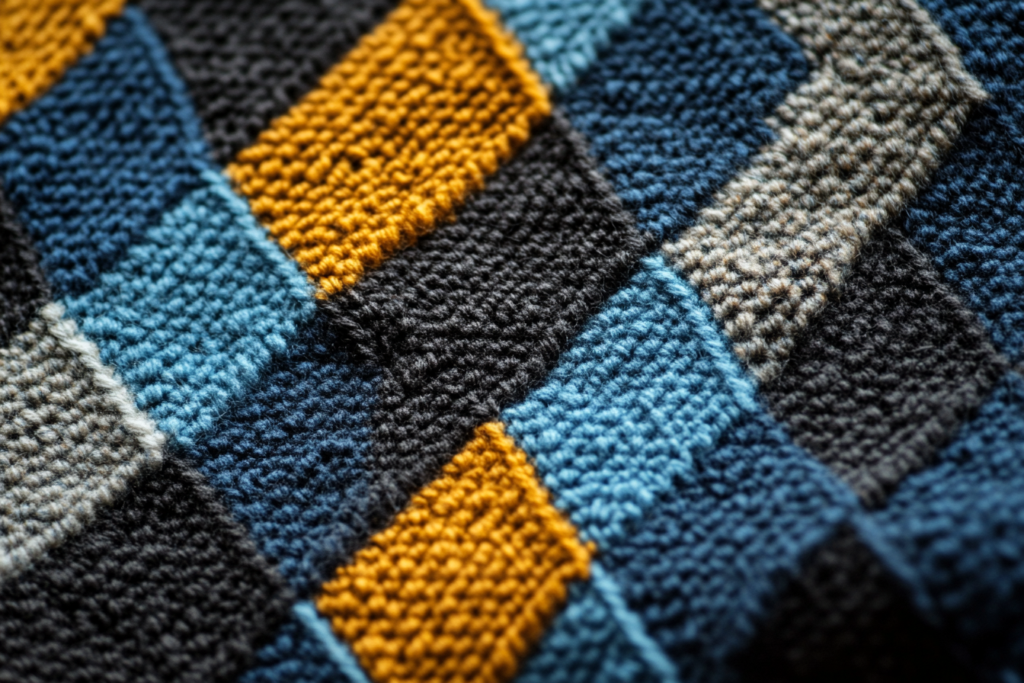Tuck Stitch: An Essential Technique for Sweater Design
Meta Description: The tuck stitch is a type of sweater stitch where the crochet hook picks up a new stitch when it misses the previous one. Learn about this technique and its impact on the texture and appearance of knitted garments.
What is a Tuck Stitch?
A tuck stitch is a type of stitch used in knitting and crochet techniques, specifically in the creation of sweaters and other knitwear. In the tuck stitch, the crochet hook or knitting needle misses the previous stitch and picks up a new stitch on top of it, creating a distinctive texture on the fabric. This technique is used to create a unique effect where the stitch appears to “tuck” under, adding depth and dimension to the fabric.
The tuck stitch can be used for decorative effects or to add strength and elasticity to knitted garments. It’s a versatile stitch, commonly found in sweaters, scarves, and other knitted apparel, giving each piece a unique look.


Key Features of the Tuck Stitch
✔ Textured Appearance: The tuck stitch creates a raised pattern that gives the fabric a textured and dimensional look.
✔ Elasticity: It can add stretch to the fabric, making it ideal for creating garments that need to retain their shape.
✔ New Stitch Creation: The stitch is created when the crochet hook skips over the previous stitch and picks up a new one, creating a layered effect.
✔ Versatility: Tuck stitches can be used in a variety of designs, from simple to complex patterns.
✔ Perfect for Sweaters: Commonly used in sweater knitting, the tuck stitch gives garments a warm and cozy feel.
How to Make a Tuck Stitch
Creating a tuck stitch involves a few steps that differ from traditional knitting or crochet stitches. Here’s how you can create this distinctive effect:
Step 1: Prepare Your Yarn and Hook/Needle
- Choose your yarn and the appropriate crochet hook or knitting needle size for your project. Tuck stitches work well with thicker yarns for a more noticeable texture.
Step 2: Knit or Crochet the First Stitch
- Begin by working the first stitch as usual. This is the foundation for the tuck stitch.
- In crochet, you would typically start by creating a chain stitch.
Step 3: Skip the Previous Stitch
- Instead of inserting the hook or needle into the previous stitch, skip over it.
- This is what distinguishes the tuck stitch from traditional stitches. You’re missing a stitch and moving to the next one.
Step 4: Pick Up the New Stitch
- Insert the hook or needle into the next stitch, completing the stitch as you normally would.
- This creates the tuck effect, where the skipped stitch creates a pucker or raised section on the fabric.
Step 5: Repeat the Process
- Continue skipping stitches and picking up new ones to create the tuck stitch pattern along the fabric. You can adjust the tension and positioning for different effects.
Step 6: Finish the Row
- Complete the row by finishing the remaining stitches in the same manner. You can combine tuck stitches with other patterns to create unique textured designs.
Applications of the Tuck Stitch
Tuck stitches are highly versatile and are commonly used in various types of knitted or crocheted items:
📌 Sweaters
- The tuck stitch is most popular in sweater knitting, where it adds a textured, dimensional look and provides stretch for a comfortable fit.
📌 Scarves and Shawls
- Tuck stitches can create interesting patterns in scarves or shawls, adding a layer of warmth while still being visually appealing.
📌 Home Textiles
- The technique can be applied to items like blankets, throws, and pillows to create cozy home decor with added visual texture.
📌 Hats and Gloves
- Knit caps and gloves can benefit from the elasticity and texture that the tuck stitch offers, ensuring both functionality and style.
Advantages of the Tuck Stitch
1. Increased Texture and Depth
- The raised effect of the tuck stitch adds dimension to the fabric, making it ideal for creating bold, statement pieces.
2. Improved Elasticity
- Tuck stitches are often used in areas of a garment where elasticity is important, like sweater cuffs and necklines, providing stretch without sacrificing style.
3. Versatility in Patterns
- The tuck stitch can be combined with other patterns, like cables, lace, or ribbing, to create unique designs. Its versatility makes it a great choice for custom-knit garments.
4. Adds Warmth and Comfort
- The stitch not only provides aesthetic appeal but also adds to the insulating properties of knitted garments, making them ideal for cold weather.
Tuck Stitch vs. Other Knitting Stitches
| Stitch Type | Tuck Stitch | Regular Knitting Stitch |
|---|---|---|
| Appearance | Creates a raised, textured pattern | Flat, smooth fabric |
| Elasticity | Provides stretch and movement | Less stretch |
| Texture | Creates depth and dimension | Smooth surface |
| Usage | Ideal for sweaters, scarves, and home textiles | Used for basic knit fabrics |
| Complexity | Intermediate technique, requires skipping stitches | Basic technique |
Illustration of the Tuck Stitch
Here’s an illustration showing how the tuck stitch works in crochet or knitting. It demonstrates how the crochet hook or needle misses the previous stitch and picks up a new one, creating a raised texture on the fabric.

Conclusion: The Beauty of Tuck Stitch in Knitwear
The tuck stitch is a fantastic way to add texture, depth, and elasticity to your knitted or crocheted garments. Whether you’re working on a cozy sweater, a stylish scarf, or a unique piece of home decor, this stitch technique offers both visual appeal and functional benefits. Its ability to create dimensional patterns while adding comfort makes it an essential tool for knitters and crocheters alike.



